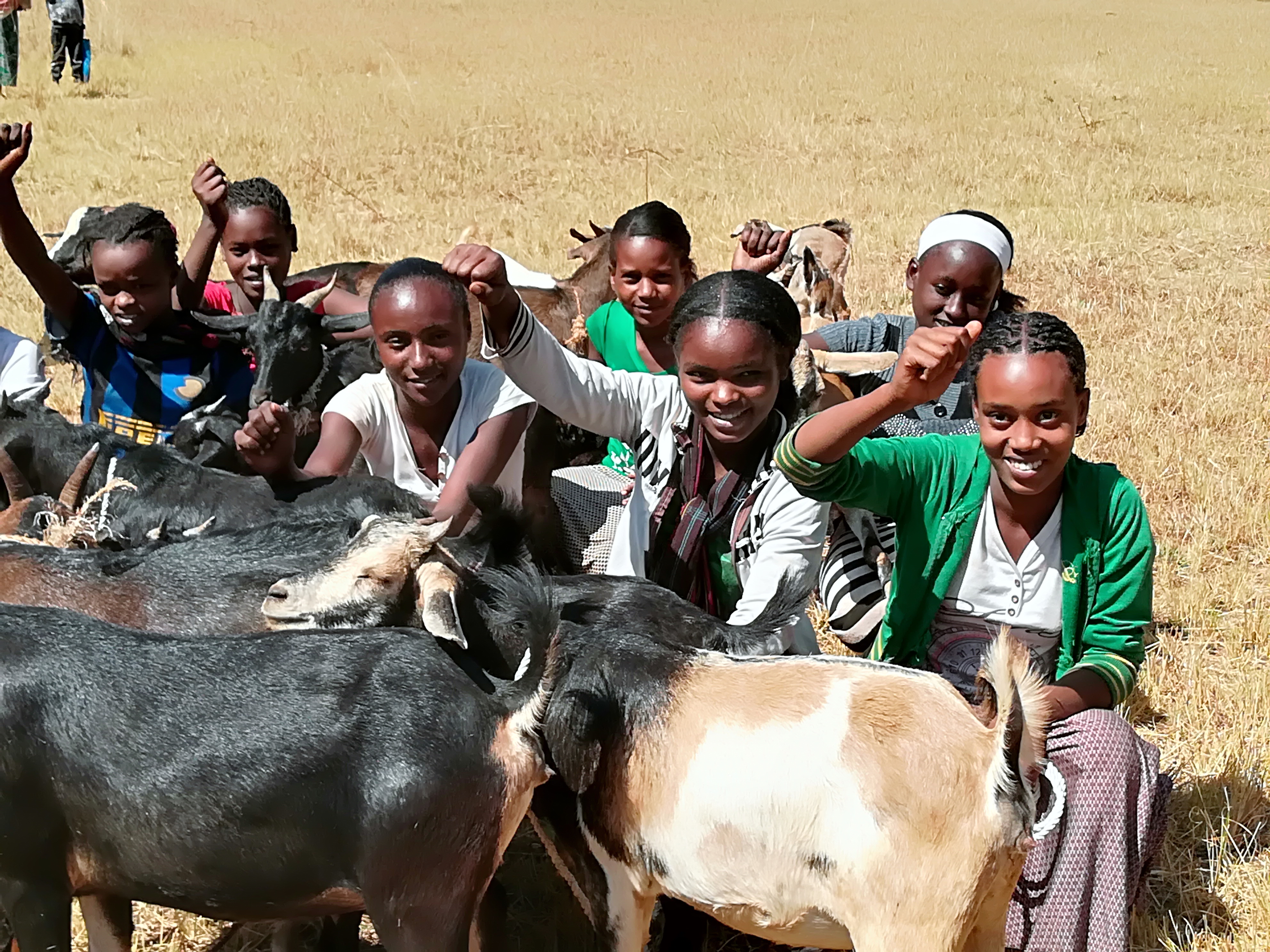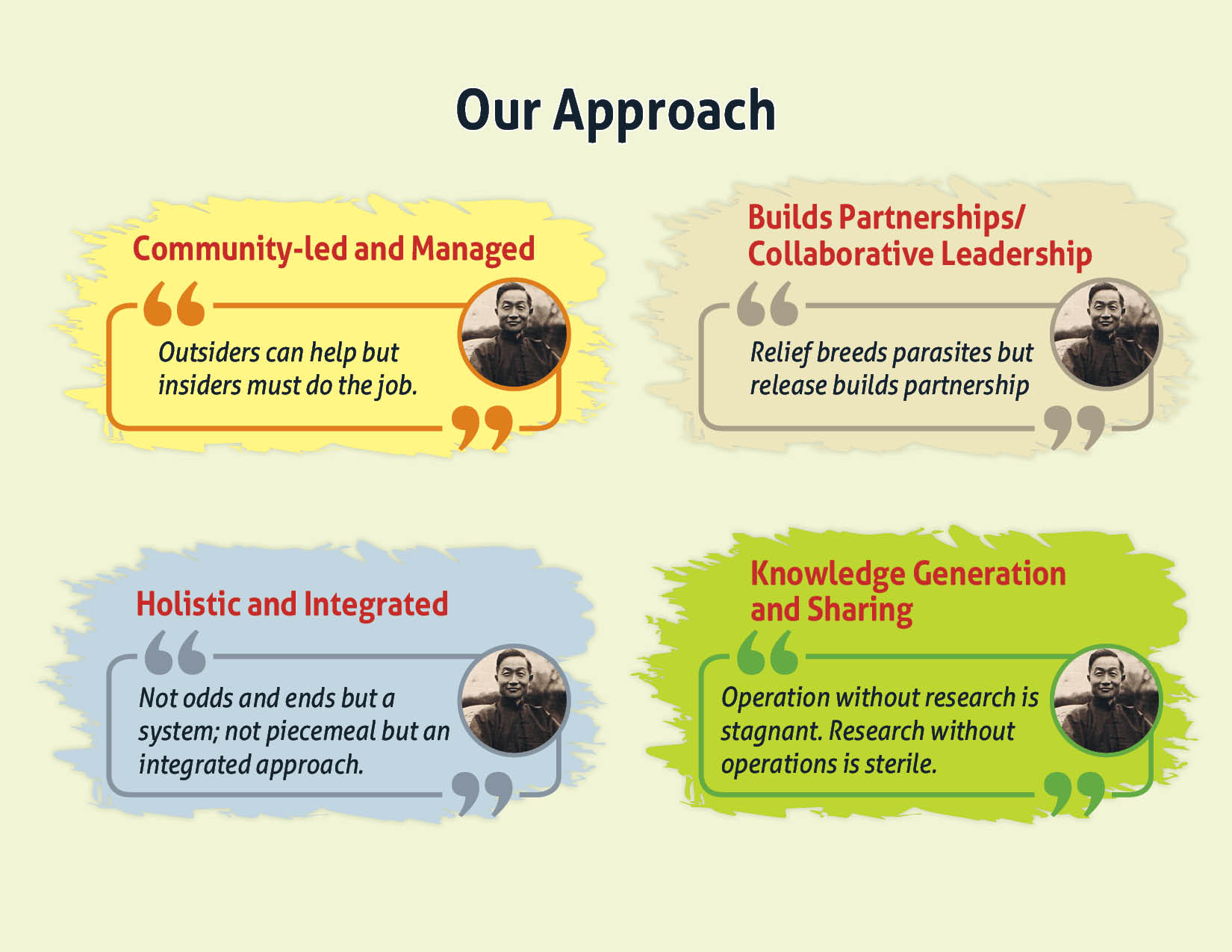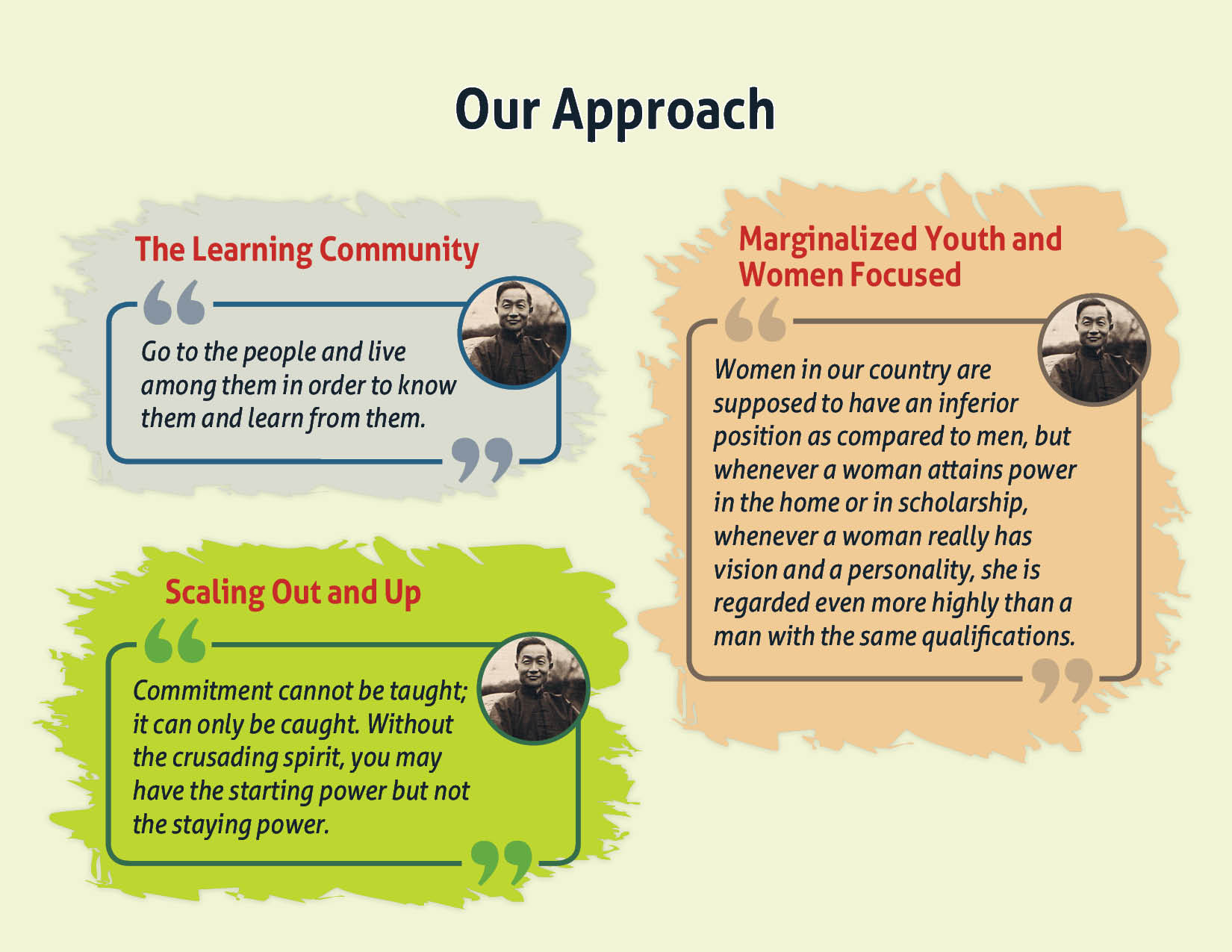
Our strategy defines our aspirations and strategic actions to deliver on our mission, build on past successes and innovations, find sustainable solutions to overcome poverty, and strengthens community empowerment through excellence and active participation.
Aligning with the UN Sustainable Development Goals (SDG), we are given the opportunity to learn from and share our decades-long experience of sustainable development principles and practices with the world community. The SDG Agenda entails 17 goals designed to end poverty, provide prosperity, and individual well-being while protecting the environment by 2030.
IIRR’s work is directly linked to:
Partnerships and Collaborative Leadership
Also, our participatory approach stimulates collaboration which builds a collective voice and action that will have a greater impact on policy and governance to integrate grassroots programs into national development with organizations like Give2Asia and the UN’s FAO—to name a few.
Globally, we partner with more than 150 organizations working towards the same vision in mobilizing people affected by poverty. We carefully select partners who demonstrate success, have a community-centered approach and deep knowledge and understanding of the local communities we serve. Through our historical evolution, IIRR focuses its attention on increasing leadership among the individuals we serve by empowering them to build consensus, overcome adversity while investing in their skills and knowledge to create opportunities that will shape our work and learn together.
Community-Managed Approach
We provide opportunities and create an environment that allows communities to manage and be actively engaged. This often involves building their capacities through “learning by doing,” helping them reflect on their experiences and choosing the best course of action. It means leading to a state of empowerment by creating platforms where people can share ideas and work together for a common vision by “leading from behind” so that communities develop ownership of their development.
“Not odds and ends but a system. Not piecemeal but an integrated approach.” - Dr. Y.C. James Yen
Integrated & Holistic Development
For example, in addressing educational challenges, we first find out why some parents are reluctant to send their kids to school. In some cases, children are needed at home to assist with household chores, or there may be a lack of resources, food and supplies that make it difficult for children to be successful in classes. There are even some safety concerns for female students. We consider all these factors when we design holistic interventions. The different activities and strategies are implemented in such a way that they support and complement each other leading to a systematic and holistic solution for the affected communities.
Unleashing the Potential of Women and Youth
Although Asian and African governments have made attempts in putting policies into place that strive for better representation of youth and women—challenges persist. Young girls are married off at a young age instead of staying in school. While missing on their rights to self-determination, they end up having more children than they would have wanted and become victims of abuse in cases where marriage becomes the only source of economic survival. Women are still restricted from owning or accessing basic production resources, like land or capital. They are kept out of schools and prevented from becoming leaders in their communities and other institutions.
IIRR seeks strategic interventions that tie education and economic development that link youth (both boys and girls) and women to technology, markets, and job opportunities that also generate wealth creation and enterprise development. Over the years, we have made significant progress in girls education and adult literacy for young women, especially in pastoralist communities. We have put policy into action for equal representation of women in leadership positions, improving on equitable access to opportunities, resources, and basic services that increase their safety and security to ensure that they may become productive agents of their growing economies.
“Go to the people. Live among them. Learn from them. Love them. Serve them. Plan with them. Start with what they know. Build on what they have.” - Dr. Y.C. James Yen
Developing Models in Learning Communities
An important aspect of IIRR’s learning approach is through action research with communities. Results of this research are disseminated through our publications, international trainings, technical assistance, customized courses, study missions, and south-south exchanges. Thus, global learning and sharing become an integral component of our work.
Simple, low-cost methods like organizing exchange visits or conducting train-the-trainer programs are adapted in our models to ensure wide-scale replication whereby we identify initiatives and technologies that worked well in one community, country or region and replicate it in another.


